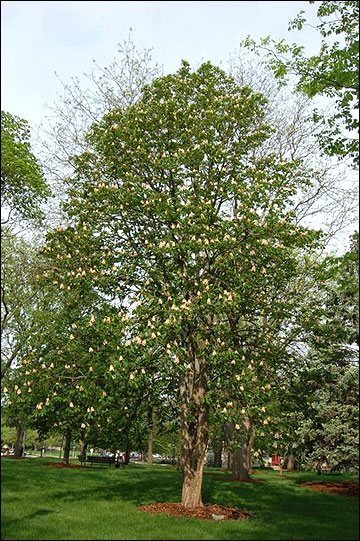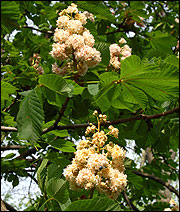Horse chestnut (Aesculus hippocastanum)
Large trees


- Maximum height
60 feet - Relative growth rate
Poor - Freedom from insect pests
Good - Freedom from disease problems
Good - Resistance to storm damage
Poor - Will grow on poorly drained soil
Poor - Will grow in hot, dry areas
Poor - Easy to transplant
Poor - Withstands city conditions
Poor
The horse chestnut is a magnificent tree in the spring when its foot-long panicles of showy flowers cover the tree like candles on a Christmas tree. It is definitely not a tree for the small yard. Its course texture and large size make it look out of place except in a very large area. The horse chestnut has earned a bad reputation in many areas. Its branches are relatively weak and subject to storm damage. The large nuts are produced profusely. They have no economic or ornamental value and are a nuisance wherever they fall.
The Baumann horse chestnut, a double-flowered variety, should be planted in preference to the standard varieties because it does not produce seed. There is also a red-flowered form available that is more showy than the standard white-flowered types.